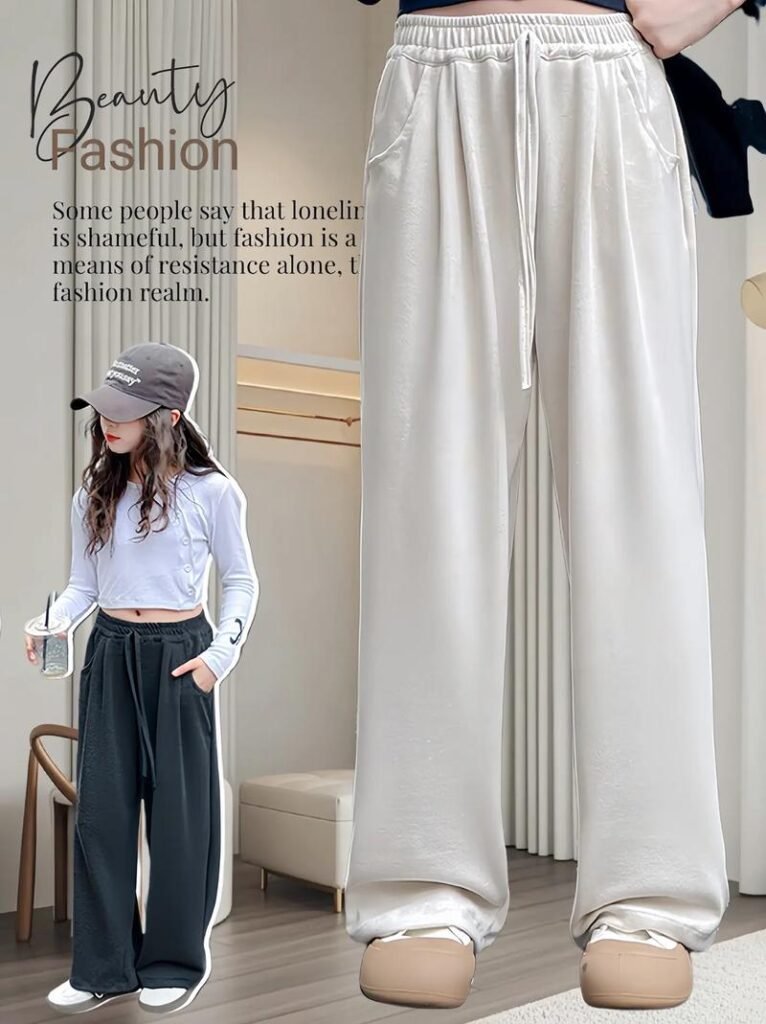
In today’s highly competitive textile industry, choosing the right cotton fabric can literally make or break your business. With global cotton fabric demand projected to exceed 29 million metric tons by 2026, brands and B2B buyers face enormous pressure to select fabrics that not only fit their product line but also satisfy sustainability goals, performance standards, and cost constraints.
selecting the right cotton fabric type requires a careful balance of fiber quality, weave structure, application suitability, and supplier capabilities. Ignoring any of these can lead to production delays, customer complaints, or significant financial loss.
Take, for example, a premium home textile brand in Europe. They sourced basic carded cotton to reduce costs but ended up with customer returns due to excessive pilling and shrinkage after washing. By switching to a combed, long-staple cotton with enzyme finishing, not only did their return rate drop by 40%, but they also saw an uptick in luxury market perception.
In this guide, we’ll break down every critical factor — from fiber types to certifications — that every serious textile business owner must consider when sourcing cotton fabrics.
What Are the Main Types of Cotton Fabrics Available for Commercial Use?
When sourcing cotton fabrics for business, you’re not just picking “cotton” — you’re selecting from a complex range of fiber types, processing methods, and commercial grades that directly affect product performance and customer satisfaction.
The most common cotton fabric types for commercial buyers include:
- Combed Cotton: High-quality, smooth, and durable; widely used in premium apparel.
- Carded Cotton: Cost-effective but lower quality; used in basic garments and low-end products.
- Pima Cotton (or Supima in the U.S.): Extra-long staple cotton prized for softness and strength.
- Egyptian Cotton: Luxury-grade long staple, often used in bedding and upscale products.
- Organic Cotton: Grown without synthetic chemicals; increasingly demanded for sustainability.
- Cotton Blends: Cotton mixed with synthetic fibers (like polyester) for wrinkle resistance or cost reduction.
Comparing Key Cotton Types
| Cotton Type | Fiber Length | Main Applications | Strengths | Weaknesses |
|---|---|---|---|---|
| Combed Cotton | Medium-Long | T-shirts, baby wear, fine shirting | Smooth, fewer impurities, strong | Higher cost |
| Carded Cotton | Short-Medium | Budget apparel, home textiles | Cheap, widely available | Coarser feel, pills easily |
| Pima/Supima | Extra Long | Luxury fashion, premium bedding | Ultra-soft, durable, color retention | Expensive |
| Egyptian Cotton | Extra Long | High-end sheets, towels | Superior softness and breathability | Prone to counterfeit claims |
| Organic Cotton | Variable | Eco-apparel, premium markets | Chemical-free, sustainable image | Lower yields, higher price |
| Cotton Blends | Mixed | Workwear, uniforms, everyday wear | Cost-effective, versatile | Lower natural feel |
Global Demand Trends (2024 Data)
| Cotton Type | Global Demand Share |
|---|---|
| Carded Cotton | 42% |
| Combed Cotton | 25% |
| Organic Cotton | 10% (and growing 5-7% YoY) |
| Pima/Egyptian | 8% |
| Cotton Blends | 15% |
How Do Different Cotton Weaves Affect Fabric Performance and Application?
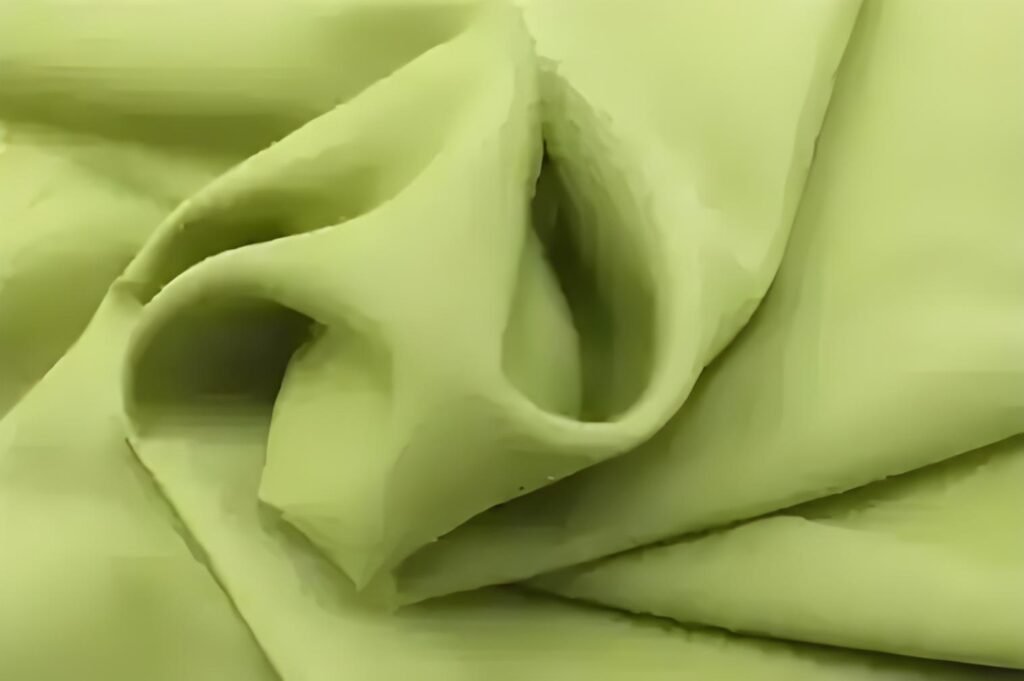
Choosing the fiber is only half the equation. The weaving method dramatically influences how the final fabric performs under real-world use.
weave structure determines fabric strength, appearance, breathability, and suitability for various industries. A lightweight voile weave may be perfect for summer dresses but disastrous for industrial workwear.
Common Cotton Weaves Explained
| Weave Type | Structure | Best Uses | Advantages | Disadvantages |
|---|---|---|---|---|
| Plain Weave | Over-under | Shirts, quilting, bedding | Balanced, durable, affordable | Less flexible |
| Twill Weave | Diagonal ribs | Denim, chinos, jackets | Strong, wrinkle-resistant | Heavier, less breathable |
| Satin Weave | Floating yarns | Luxury bedding, dresses | Smooth, shiny, elegant | Snags easily |
| Oxford Weave | Basket variation | Dress shirts | Soft yet durable | Limited drape |
| Dobby Weave | Small geometric patterns | Towels, upholstery | Decorative textures | More complex production |
| Jacquard Weave | Intricate designs | High-end drapery, upholstery | Custom patterns possible | Expensive |
A Sportswear Brand’s Weave Dilemma
One SzoneierFabrics client manufacturing high-performance golf shirts initially used a plain weave for cost reasons. But customers complained about stiffness and lack of moisture-wicking. After switching to a dobby weave with combed cotton and a special wicking finish, customer satisfaction rose 38%, and average repeat purchase rates increased.
How Weave Impacts Business KPIs
| Weave Type | Shrinkage Risk | Wrinkle Resistance | Customer Satisfaction Impact |
|---|---|---|---|
| Plain | Medium | Low | Average |
| Twill | Low | High | High |
| Satin | High | Low | Very High (luxury segment) |
| Oxford | Low | Medium | High |
| Jacquard | Variable | High | Premium Market Appeal |
Which Cotton Fabric Grades Offer the Best Balance of Cost and Quality for B2B Orders?
In B2B cotton fabric sourcing, price is always important — but so is quality consistency, customer satisfaction, and long-term supplier relationships. The key is finding the grade that aligns with your business model and target market.
Combed medium-staple cotton often offers the most reliable balance between affordability and performance for mainstream B2B orders, while carded cotton serves cost-sensitive segments and long-staple fibers dominate premium niches.
Understanding Cotton Fabric Grades
Cotton is graded based on several key criteria:
- Fiber Length (Staple Length)
- Fiber Strength
- Color Uniformity
- Trash Content (contamination level)
- Micronaire (fineness and maturity)
| Grade | Staple Length (mm) | Primary Use Cases | Average Price (USD/kg) | Market Availability |
|---|---|---|---|---|
| Premium Long-Staple | 33mm+ | Luxury bedding, high-end fashion | \$4.50–\$8.00 | Limited |
| Mid-Grade Combed | 28–32mm | Mid-range apparel, baby wear, branded T-shirts | \$3.20–\$4.50 | Widely available |
| Basic Carded | 24–27mm | Budget apparel, workwear, promotional items | \$2.00–\$3.20 | Abundant |
| Low-Grade Waste Cotton | <24mm | Filling, insulation, non-wovens | \$1.00–\$2.00 | Commodity |
Choosing the Right Grade
A European promotional T-shirt supplier approached SzoneierFabrics for a 100,000-piece order. They initially requested basic carded cotton to minimize costs. However, after reviewing customer feedback trends in their market (increased pilling and poor durability), we recommended mid-grade combed cotton instead.
- Unit cost increased by 18%
- Returns decreased by 36%
- Repeat corporate orders increased by 24% over 12 months
Cost vs. Quality Trade-Off Table
| Metric | Carded Cotton | Combed Cotton | Long-Staple Cotton |
|---|---|---|---|
| Yarn Evenness | Low | Medium-High | Very High |
| Fabric Pilling | High | Low | Very Low |
| Color Retention | Fair | Good | Excellent |
| Customer Satisfaction | Budget buyers | Mainstream brands | Premium buyers |
| Lifetime Value | Short | Medium | Long |
How to Evaluate Cotton Fiber Sources: Organic vs. Conventional vs. Blended?
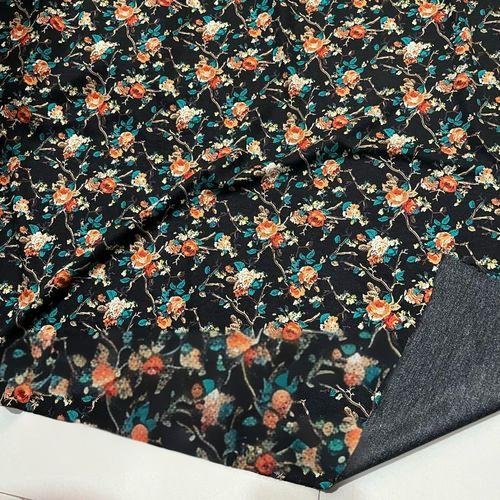
In today’s sustainability-conscious market, your cotton sourcing strategy can directly impact brand reputation, export opportunities, and even eligibility for certain retail partnerships.
Organic cotton offers strong marketing advantages but higher prices; conventional cotton is cheaper and more scalable; blends provide technical benefits like strength, wrinkle-resistance, or moisture management.
The Three Main Fiber Source Categories
1. Organic Cotton
- Grown without synthetic pesticides or GMOs
- Certified under standards like GOTS (Global Organic Textile Standard) or OCS (Organic Content Standard)
- Appeals to eco-conscious consumers and luxury markets
Organic Cotton Key Metrics
Global Market Share: 1.4% (2024)
Price Premium: 20–40%
Typical Buyers: Patagonia, Stella McCartney, H\&M Conscious
2. Conventional Cotton
- Grown using modern farming methods, including chemicals and irrigation
- Widely available at lower costs
- Easier for large-scale manufacturing
Conventional Cotton Key Metrics
Global Market Share: 98%
Lower Cost: Baseline pricing
Key Markets: Mass fashion, workwear, bedding
3. Cotton Blends
- Cotton blended with fibers like polyester, spandex, or rayon
- Enhances fabric strength, elasticity, wrinkle resistance
- Popular for activewear, uniforms, and budget-conscious garments
Common Blend Ratios
60% Cotton / 40% Polyester
80% Cotton / 20% Spandex
50% Cotton / 50% Rayon
Side-by-Side Comparison Table
| Aspect | Organic Cotton | Conventional Cotton | Cotton Blends |
|---|---|---|---|
| Cost | High | Low | Medium |
| Sustainability | Excellent | Poor | Fair |
| Availability | Limited | Wide | Very Wide |
| Brand Image | Luxury / Green | Mainstream | Technical |
| Performance | Soft, breathable | Durable, consistent | Strong, functional |
Brand Reputation Case
A U.S. children’s apparel startup sourced organic cotton from SzoneierFabrics to target millennial parents. Though initial fabric costs were 25% higher, their products gained instant traction on platforms like Etsy and Amazon Handmade due to clear eco-labeling. The brand reached break-even in 7 months thanks to premium pricing and loyal customers.
What Are the Key Factors to Consider When Sourcing Cotton Fabrics for Apparel, Home Textiles, and Industrial Uses?
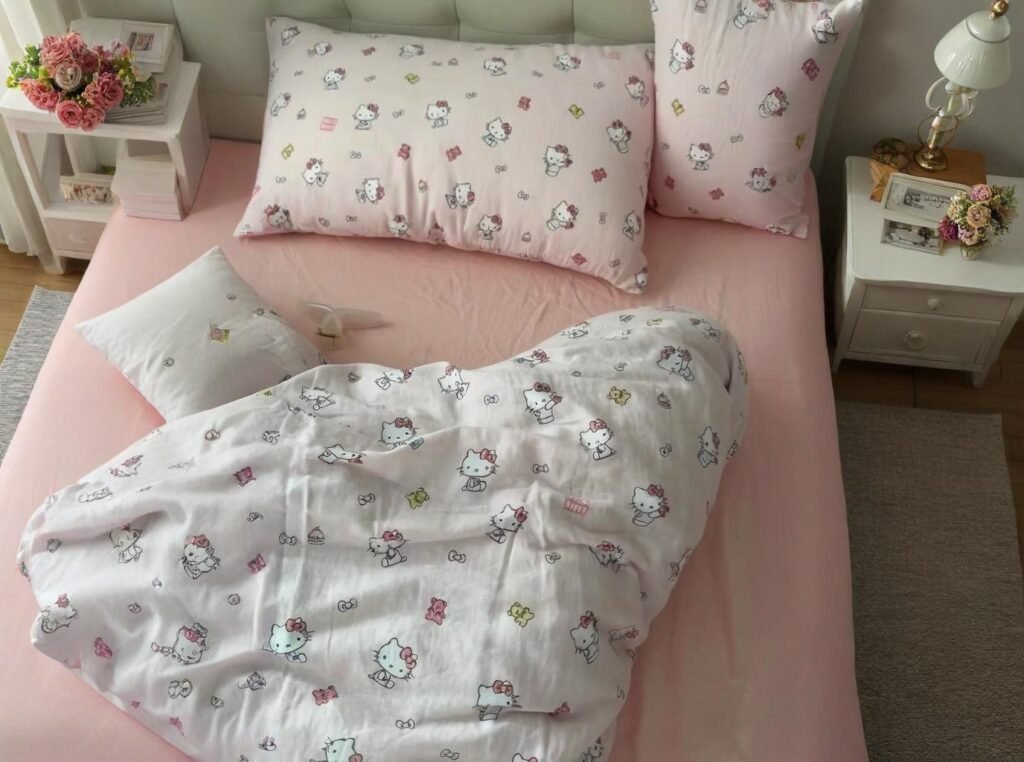
Not all cotton fabrics serve the same purpose — apparel, home textiles, and industrial uses have vastly different technical, aesthetic, and regulatory demands. Choosing wrong can cause costly product failures or customer dissatisfaction.
Successful sourcing requires aligning fiber type, weave, weight, performance characteristics, compliance, and customer expectations for each end-use market.
Sector-Specific Sourcing Considerations
1️⃣ Apparel Industry
| Factor | Key Consideration |
|---|---|
| Softness | High for babywear, lingerie |
| Stretch & Recovery | Critical for activewear |
| Colorfastness | Required for fashion & branding |
| Breathability | Essential for summerwear |
| Shrinkage Control | Avoid after-sale complaints |
2️⃣ Home Textile Industry
| Factor | Key Consideration |
|---|---|
| Thread Count | 200-800 for bedding |
| Fabric Weight | 150-300 gsm depending on application |
| Wash Durability | Multiple wash cycles |
| Color Consistency | Hotel-grade expectations |
| Fire Retardancy | Regulatory in some regions |
3️⃣ Industrial Applications
| Factor | Key Consideration |
|---|---|
| Tensile Strength | High loads for workwear, uniforms |
| Abrasion Resistance | Prolonged wear & tear |
| UV Resistance | Outdoor uses like tents |
| Chemical Treatments | Oil-resistant, anti-static for safety garments |
| Compliance | OSHA, ISO, EN standards |
Industry-Specific Buyer Mistakes
- A South American uniform manufacturer bought low-grade cotton for oilfield coveralls. After just 3 months, tearing and color fading triggered contract penalties.
- SzoneierFabrics later supplied high-tenacity combed cotton with flame-retardant coating, extending garment lifespan by 40%.
Best Cotton Fabric Types by Industry
| Industry | Recommended Cotton Type | Key Specs |
|---|---|---|
| Fashion Apparel | Combed Cotton | Softness, shrink control |
| Babywear | Organic Cotton | Hypoallergenic, soft |
| Workwear | Cotton Blends | Strength, easy care |
| Bedding | Egyptian or Pima | Thread count, luxury feel |
| Hospitality | High-Thread Combed | Colorfast, durable |
| Industrial | Coated Cotton Blends | Chemical resistance |
How Do Finishing Treatments (Pre-shrunk, Mercerized, Coated) Impact Fabric Quality and Buyer Satisfaction?
Even the best raw cotton fabrics can fall short without proper finishing. Finishing transforms ordinary fabric into market-ready material that performs and sells.
Finishing treatments enhance softness, durability, shrink control, dye uptake, and specialty functions — all of which directly improve buyer satisfaction and reduce after-sale problems.
Key Cotton Finishing Treatments
1️⃣ Pre-shrinking (Sanforization)
- Stabilizes fabric size before sale
- Prevents >5% shrinkage after washing
- Critical for apparel manufacturers to avoid customer returns
| Effect | Shrinkage Reduction |
|---|---|
| Non-Sanforized Cotton | Up to 10% |
| Sanforized Cotton | Less than 2% |
2️⃣ Mercerization
- Chemically treats fabric to swell fibers
- Improves dye affinity and luster
- Increases tensile strength
- Common for premium fashion and bedding
| Benefit | Performance Impact |
|---|---|
| Dye Uptake | +25% richer colors |
| Luster | High sheen |
| Strength | +15% tensile improvement |
3️⃣ Coating and Functional Finishes
- Adds specialty functions like:
- Water repellency
- Oil resistance
- Anti-microbial properties
- Flame retardancy
- Essential for uniforms, outdoor gear, industrial uses
| Application | Functional Finish |
|---|---|
| Medical Textiles | Antimicrobial |
| Workwear | Flame Retardant |
| Outdoor Gear | Water Repellent |
Hospitality Bedding
A luxury hotel chain in Dubai sourced Egyptian cotton bedding from SzoneierFabrics. We applied both mercerization and anti-pilling finishes. Despite premium pricing, they reported:
- 65% reduction in linen replacement costs
- 30% higher guest satisfaction scores
- Improved long-term procurement ROI
Buyer Satisfaction Table
| Finishing Type | Buyer Impact |
|---|---|
| Pre-shrunk | Fewer returns, better sizing |
| Mercerized | Premium feel, stronger branding |
| Coated | Expands industrial & safety markets |
What MOQ, Lead Time, and Customization Options Should B2B Buyers Expect from Cotton Fabric Manufacturers?
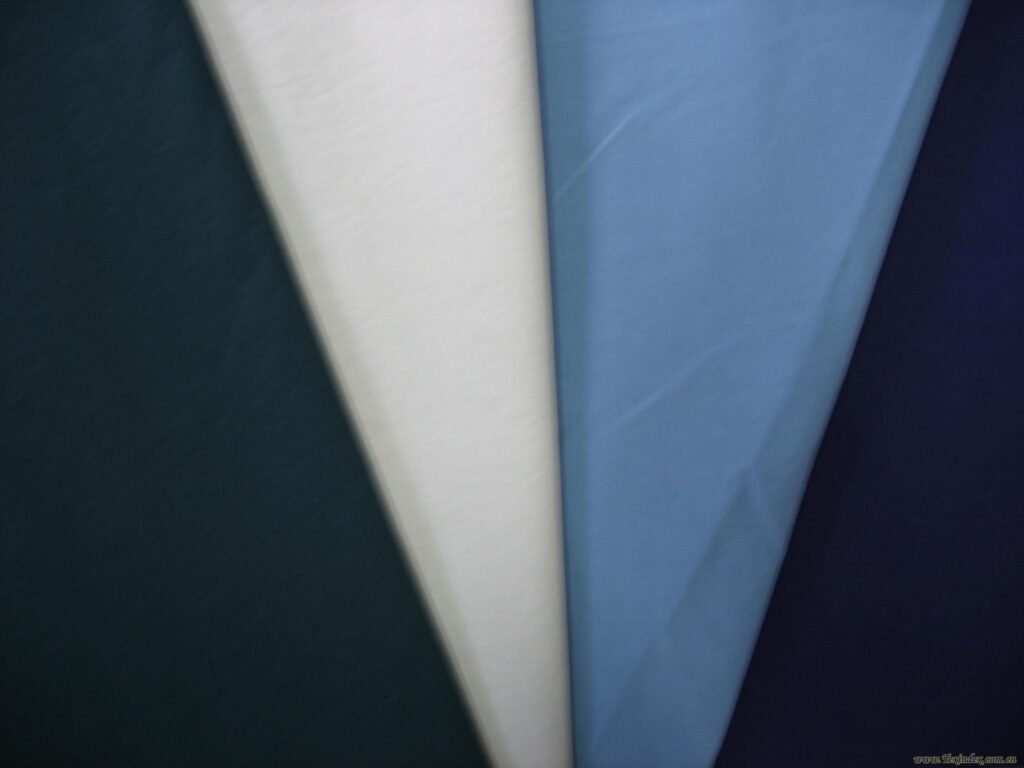
MOQ (Minimum Order Quantity), lead time, and customization flexibility are among the most critical factors for B2B textile buyers, directly affecting working capital, inventory risk, and market responsiveness.
Reliable suppliers like SzoneierFabrics offer flexible MOQs, fast prototyping, and a wide range of customization options to meet the specific demands of small-to-medium businesses as well as premium brands.
Typical B2B Buyer Expectations
| Parameter | Standard Range | SzoneierFabrics Advantage |
|---|---|---|
| MOQ | 300–500 meters per color/design | Low MOQ: 100–300 meters |
| Sample Lead Time | 7–15 days | 5–10 days |
| Bulk Lead Time | 25–40 days | 20–30 days |
| Custom Colors | Pantone Matching System (PMS) | 100% PMS matching |
| Custom Weaves | Available | Fully customizable |
| Custom Finishes | Limited in small mills | Full finishing options |
| Printing | Screen, rotary, digital | All supported |
Startup vs. Large Brand
- A U.K. fashion startup approached SzoneierFabrics needing just 200 meters per color of GOTS-certified organic cotton for a capsule collection.
- We offered a 10-day sample run and 3-week bulk lead time, allowing them to test-market before scaling up.
- In contrast, a large U.S. home textiles brand ordered 10,000 meters of mercerized Egyptian cotton for global distribution with a standard 5-week lead time.
Why MOQs Matter for Cash Flow
| Order Size | Cash Outlay | Inventory Risk |
|---|---|---|
| Low MOQ | Lower | Easier to pivot |
| High MOQ | Higher | Risk of dead stock |
How to Verify the Quality, Compliance, and Certifications When Importing Cotton Fabrics?
International buyers face serious risks — from inconsistent quality to regulatory non-compliance — if they don’t properly vet their cotton fabric suppliers.
Always verify technical specifications, perform pre-shipment inspections, request certifications, and audit factories when possible.
Key Verification Steps
1️⃣ Technical Data Sheet (TDS)
Request full specs, including:
- Fiber content (with lab reports)
- Yarn count (Ne or Tex)
- GSM (weight)
- Shrinkage % (pre-wash/post-wash)
- Color fastness (ISO standards)
- Finishing treatments applied
2️⃣ Third-Party Testing
| Standard Test | What It Verifies |
|---|---|
| ISO 105 | Color fastness |
| ISO 6330 | Shrinkage control |
| ASTM D5034 | Fabric tensile strength |
| AATCC 8 | Crocking (color transfer) |
3️⃣ Certifications to Request
| Certification | Purpose | Applicable Markets |
|---|---|---|
| GOTS | Organic status | EU, U.S., premium brands |
| OCS | Organic content verification | B2B retail chains |
| OEKO-TEX Standard 100 | Chemical safety | EU, Japan |
| ISO 9001 | Factory quality management | Global |
| BSCI / SEDEX | Ethical sourcing | EU, U.K., U.S. |
4️⃣ Factory Audits
- Evaluate production capacity
- Review quality control processes
- Confirm ethical labor practices
Compliance Saves Business
A German apparel brand nearly signed a large contract with a low-cost supplier lacking OEKO-TEX and GOTS compliance. SzoneierFabrics presented full certifications, lab test reports, and customer references — resulting in a 3-year supply contract after a full audit.
Partner with SzoneierFabrics for Reliable Cotton Fabric Solutions
Selecting the right cotton fabric types for your textile business isn’t just about choosing fiber; it’s about understanding markets, performance specs, certifications, lead times, and customer expectations. Whether you’re launching a small fashion brand or expanding your global home textile operation, working with an experienced, flexible, and fully certified supplier can dramatically reduce your sourcing risks.
At SzoneierFabrics, we offer:
- ✅ Full raw material R\&D and production
- ✅ Custom weaves, colors, and finishing treatments
- ✅ Low MOQ starting at 100 meters
- ✅ Rapid sampling and short lead times
- ✅ Complete certifications (GOTS, OEKO-TEX, ISO, etc.)
- ✅ Global B2B experience serving brands across Europe, North America, and Asia
👉 Let’s discuss your cotton fabric needs today.

